1-(TERT-BUTOXYCARBONYL)-2-PYRROLIDINONE
- CAS NO.:85909-08-6
- Empirical Formula: C9H15NO3
- Molecular Weight: 185.22
- MDL number: MFCD00674099
- EINECS: 000-000-0
- SAFETY DATA SHEET (SDS)
- Update Date: 2024-08-21 22:41:43
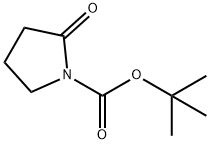
What is 1-(TERT-BUTOXYCARBONYL)-2-PYRROLIDINONE?
The Uses of 1-(TERT-BUTOXYCARBONYL)-2-PYRROLIDINONE
N-Boc-2-pyrrolidinone is a useful synthetic intermediate. It can be used to prepare highly functionalized N-acyl-2-vinylpyrrolidines by a 4-component Ugi reaction (isocyanide, carbonyl compounds, primary amines, carboxylic acids). It can also be used to synthesize the naturally occurring Maillard flavors via catalytic SeO2 oxidation.
General Description
The kinetics of gas-phase elimination of 1-(tert-butoxycarbonyl)-2-pyrrolidinone has been investigated in a static system. The observed rate coefficient has been reported to be log k1(s-1) = (11.54 ± 0.29) -(140.8 ± 2.8)-kJmol-1 (2.303RT)-1.
Properties of 1-(TERT-BUTOXYCARBONYL)-2-PYRROLIDINONE
| Boiling point: | 100-105 °C/0.5 mmHg(lit.) |
| Density | 1.086 g/mL at 25 °C(lit.) |
| refractive index | n20/D 1.466(lit.) |
| Flash point: | 113 °C |
| storage temp. | Keep in dark place,Sealed in dry,Room Temperature |
| solubility | Chloroform, Methanol |
| pka | -2.21±0.20(Predicted) |
| form | Oil |
| color | Clear Colorless to Brown |
Safety information for 1-(TERT-BUTOXYCARBONYL)-2-PYRROLIDINONE
| Signal word | Warning |
| Pictogram(s) |
 Exclamation Mark Irritant GHS07 |
| GHS Hazard Statements |
H315:Skin corrosion/irritation H319:Serious eye damage/eye irritation H335:Specific target organ toxicity, single exposure;Respiratory tract irritation |
| Precautionary Statement Codes |
P261:Avoid breathing dust/fume/gas/mist/vapours/spray. P264:Wash hands thoroughly after handling. P264:Wash skin thouroughly after handling. P271:Use only outdoors or in a well-ventilated area. P280:Wear protective gloves/protective clothing/eye protection/face protection. P302+P352:IF ON SKIN: wash with plenty of soap and water. P305+P351+P338:IF IN EYES: Rinse cautiously with water for several minutes. Remove contact lenses, if present and easy to do. Continuerinsing. |
Computed Descriptors for 1-(TERT-BUTOXYCARBONYL)-2-PYRROLIDINONE
Abamectin manufacturer
BTC pharm India
3Y
Phone:+91-8790379245
Whatsapp: +91- 8790379245
product: 1-(TERT-BUTOXYCARBONYL)-2-PYRROLIDINONE 85909-08-6 98+
New Products
4-AMINO-TETRAHYDRO-PYRAN-4-CARBOXYLIC ACID HCL 4-(Dimethylamino)tetrahydro-2H-pyran-4-carbonitrile 4-Aminotetrahydropyran-4-carbonitrile Hydrochloride (R)-3-Aminobutanenitrile Hydrochloride 3-((Dimethylamino)methyl)-5-methylhexan-2-one oxalate 1,4-Dioxa-8-azaspiro[4.5]decane 5-Bromo-2-nitropyridine Nimesulide BP Aceclofenac IP/BP/EP Diclofenac Sodium IP/BP/EP/USP Mefenamic Acid IP/BP/EP/USP Ornidazole IP Diclofenac Potassium THOMAIND PAPER PH 2.0 TO 4.5 1 BOX BUFFER CAPSULE PH 9.2 - 10 CAP SODIUM CHLORIDE 0.1N CVS ALLOXAN MONOHYDRATE 98% PLATINUM 0.5% ON 3 MM ALUMINA PELLETS (TYPE 73) LITHIUM AAS SOLUTION 2-Bromo-1-(bromomethyl)-3-chloro-5-nitrobenzene 2-Bromo-3-nitroaniline N-(3-Hydroxypropyl)-N-methylacetamide 3-Bromo-6-chloropyridazine 4-ethyl-3-nitrobenzoic acidRelated products of tetrahydrofuran
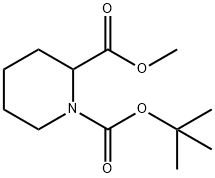
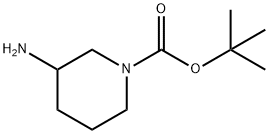

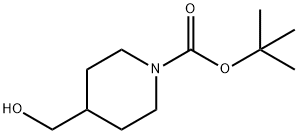
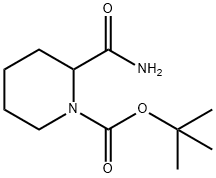

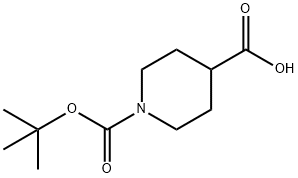

You may like
-
 85909-08-6 1-(tert-Butoxycarbonyl)-2-pyrrolidinone 98%View Details
85909-08-6 1-(tert-Butoxycarbonyl)-2-pyrrolidinone 98%View Details
85909-08-6 -
 1-(TERT-BUTOXYCARBONYL)-2-PYRROLIDINONE 85909-08-6 98+View Details
1-(TERT-BUTOXYCARBONYL)-2-PYRROLIDINONE 85909-08-6 98+View Details
85909-08-6 -
 1-(tert-Butoxycarbonyl)-2-pyrrolidinone CAS 85909-08-6View Details
1-(tert-Butoxycarbonyl)-2-pyrrolidinone CAS 85909-08-6View Details
85909-08-6 -
 1823368-42-8 98%View Details
1823368-42-8 98%View Details
1823368-42-8 -
 2-(3-(tert-butyl)phenoxy)-2-methylpropanoic acid 1307449-08-6 98%View Details
2-(3-(tert-butyl)phenoxy)-2-methylpropanoic acid 1307449-08-6 98%View Details
1307449-08-6 -
 Ethyl 3-(furan-2-yl)-3-hydroxypropanoate 25408-95-1 98%View Details
Ethyl 3-(furan-2-yl)-3-hydroxypropanoate 25408-95-1 98%View Details
25408-95-1 -
 2-Chloro-5-fluoro-1-methoxy-3-methylbenzene 98%View Details
2-Chloro-5-fluoro-1-methoxy-3-methylbenzene 98%View Details
1805639-70-6 -
 Lithium ClavulanateView Details
Lithium ClavulanateView Details
61177-44-4
Statement: All products displayed on this website are only used for non medical purposes such as industrial applications or scientific research, and cannot be used for clinical diagnosis or treatment of humans or animals. They are not medicinal or edible.